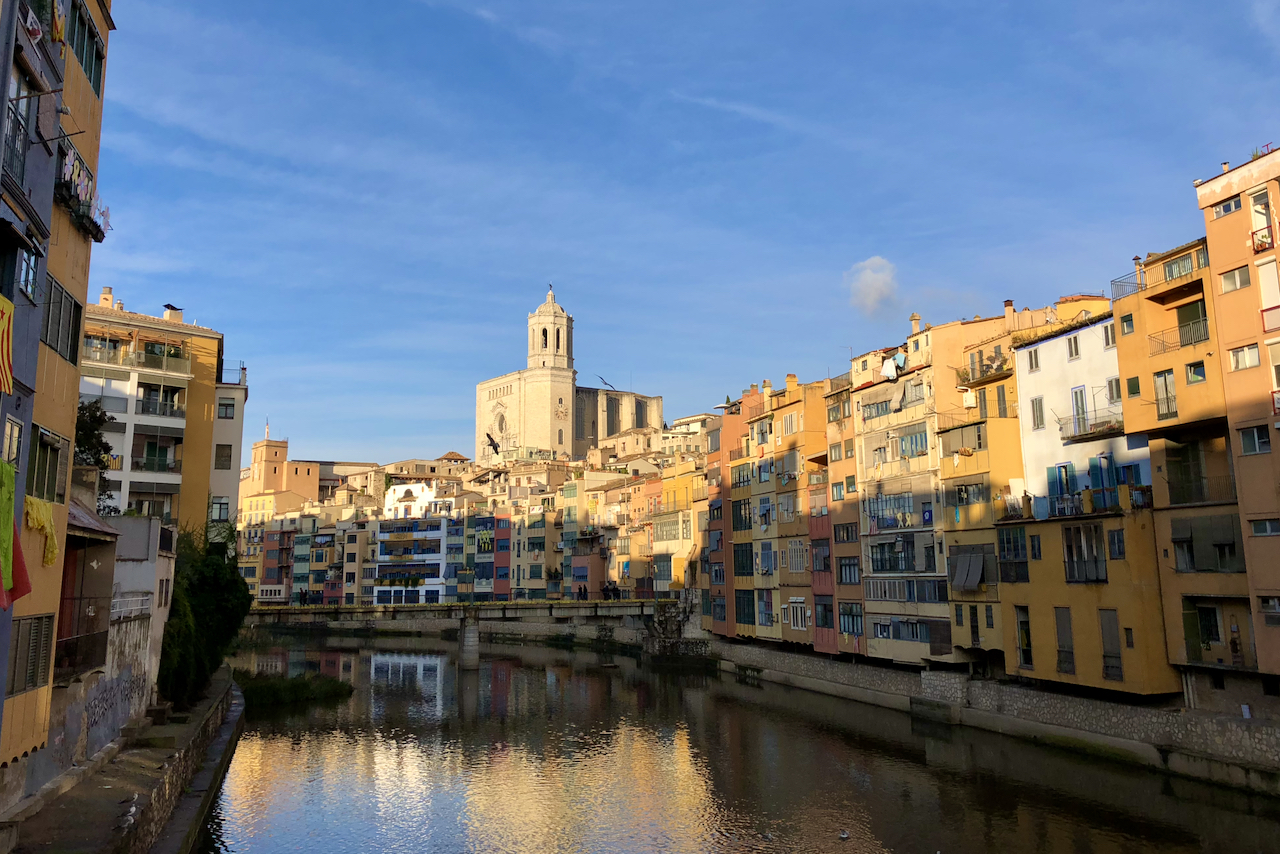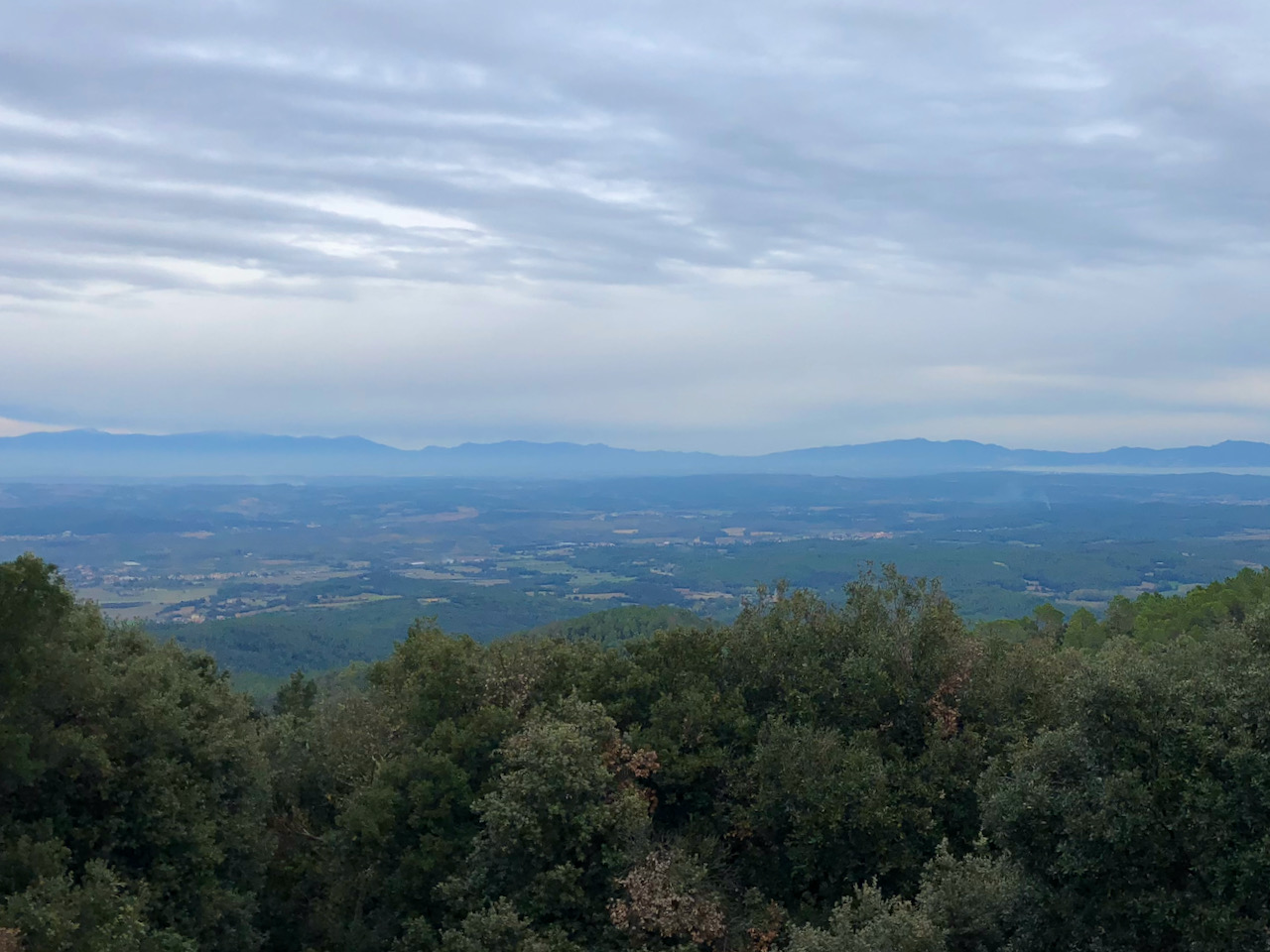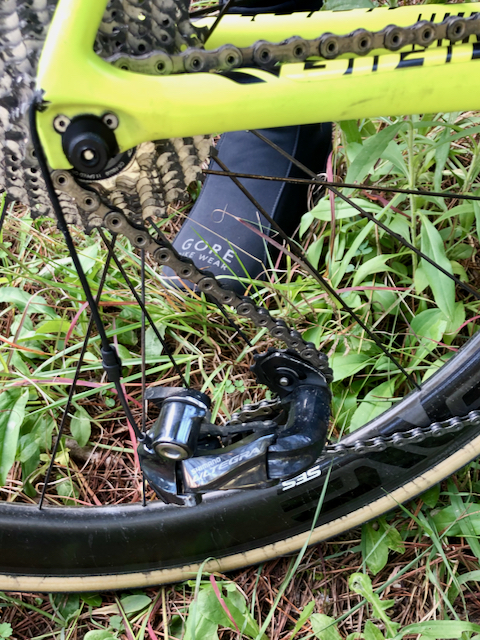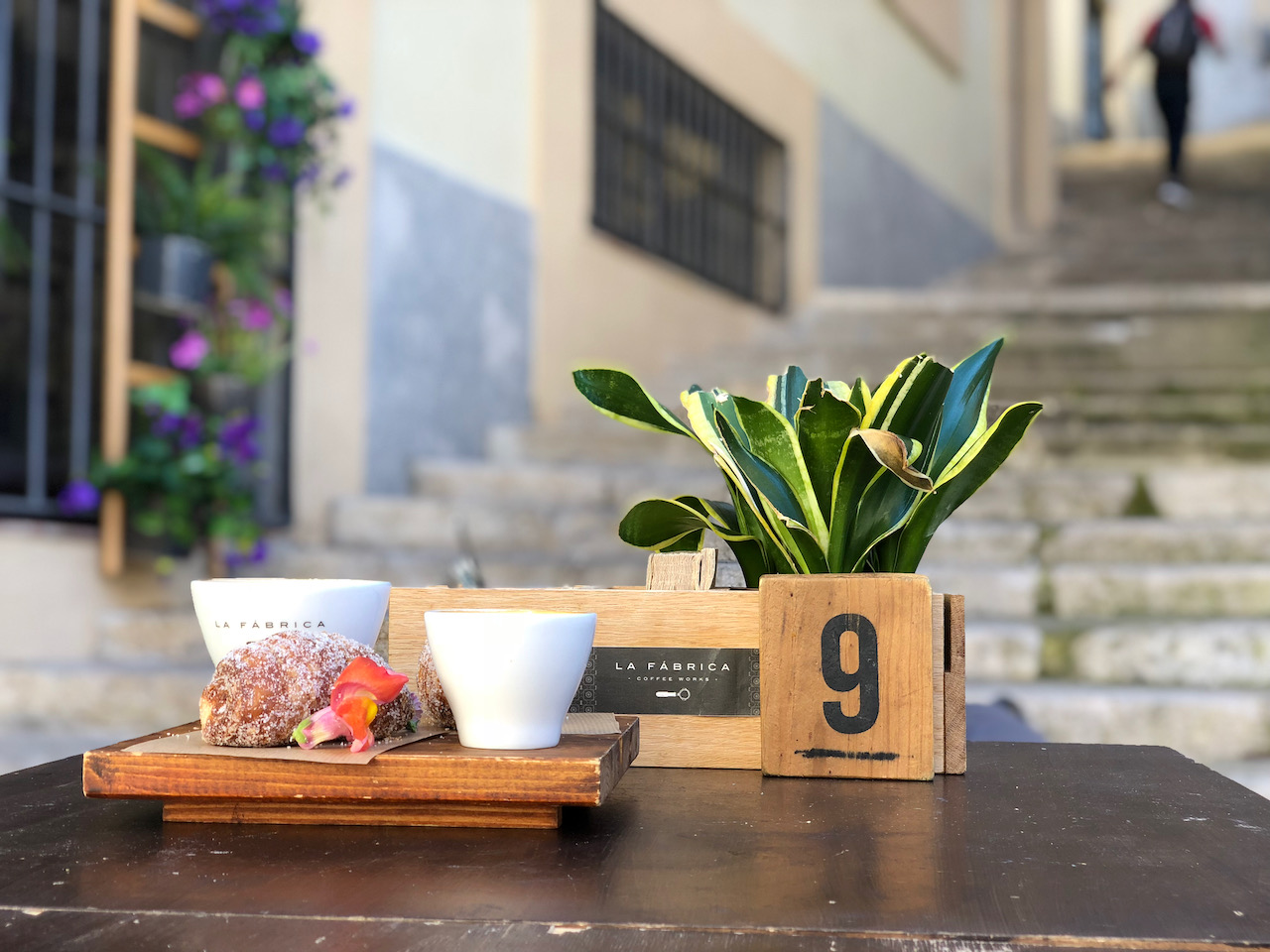
12 Minute Read

12 Minute Read
The other day, someone over in the FatCakeClub, a local riding group here in San Francisco, asked around about some recommendations for Girona, Spain. Apparently this person is currently out there for some travel and wanted to know a bit more about the town.
I got so excited! Despite not having been there more than just once back in 2018, I’ve been borderline obsessed with the town since. Especially during this past year as everything has been shut down across the globe. It’s where most professional cyclists call home.
I realized then that with all the information I put in my reply to them, that perhaps I should also put together post about it here. So voila!
In 2018, I went on my second bike travel trip through Trek Travel. The previous year I had done a similar trip to the Spanish island of Mallorca, where I rented a bike and stayed out in the countryside. This year, I opted to travel with my bike and bring my own to use in Girona. It was so worth it, and it was so awesome. And this was despite it raining basically every day that we were out there!
It was what Trek calls a “ride camp”, which is marketed to those of us who want to take a bit more direct control over our trip and ride in a bit more flexible, but often more adventurous, fashion. We were given GPX routes ahead of time through RideWithGPS, with some days being swapped at the ride leaders’ discretion, and each day typically with an option of a longer or a shorter ride.
If you’re more savvy with tech, or already know what GPX files are and how to use them on your bike computer, feel free to read ahead.
A GPX file is essentially a file that you can create that represents a route in real life. It’s basically an XML file if you’re familiar with it. It stores points of interest, directions (sometimes turn-by-turn), and GPS coordinates. Services like Strava and RideWithGPS will let you draw on a map to create these files, then share them with your friends and push them to your bike computer.
Then, when you go out to ride, you can simply queue up a route, press start, and follow the directions! Just like if you had put in something similar to Google Maps when driving somewhere, except this one is a bit more customized.
The specifics on how to do this are a bit more detailed, and perhaps I’ll write up a separate post on the subject, but for now, check out road.cc for some tips on how to get started. It will be different depending on if you sync your device with certain cloud services or if you simply download a GPX (or .FIT) file, and will be different depending on what destination device you use, but we’ll come back that.
The point is, you can visit any of the Strava links in this post and create one of these GPX files for your own personal use!
This post will likely be one of a few around the topic of riding your bike in Girona, so make sure to come back to check out anything else I put up later!
But I wanted to start off with putting some details that you, the hopeful transcontinental cyclist, can use to most fully enjoy your time cycling in Girona, if you happen to go visit.
Note that all of these rides started and ended at the Hotel Ciutat near the Barri Vell district of Girona’s old town.
This was our first day, and so it was a bit of a warm up social ride. We were all getting to know each other a bit, our riding styles, where we all came from, that sort of thing. By traveling with an American company like Trek, you tend to find others in your group from similar walks of life as your own, and they all seem to be travel-conscious and health-conscious Americans. We later exchanged names and contact information, later setting up a Google Photos album that I still refer back to this day.
The loop was only about 17-18 miles, but it’s a good starting loop to get familiar with the area a bit, get a sense for how the roads are once you get outside of town, and is easy enough to follow that you don’t even really need a tour guide with you to feel comfortable.
When you’re out there, look for the Spanish cork trees, as they’re protected federally. This region is where 80% of the world’s cork comes from!
It’s amazing at how quickly you can get out of town and suddenly be surrounded by quiet, nearly empty roads in what feels like a quintessential Spanish countryside. This ride is a great introduction to what kind of riding Girona has to offer you.
Strava Link - Canet d’Adri Loop
Second day out for us was a big one! About 80 miles, or about 130km, as we headed out towards the coast and back around through Calogne and the back side of Els Àngels. I remember feeling pretty energized, while still being worried about the cold. For some reason, there was a massive cold snap the week we were there, so in addition to it being wet out, it was also cold! Luckily not cold enough to be worried about snow or ice, but something that me, being a California kid, definitely had to bundle up for!
Note that this ride can be shortened if you opt to cut back through Santa Cristina d’Aro, Romanyà de la Selva, and Cassà de la Selva, which trims the distance down from 80 miles to about 61 miles.
If you opt for the full distance, it’ll be worth it, I promise. This was the only time this trip that I got to ride along the cliffs next to the ocean, and it’s spectacular. The roads are perfect, they wind around beautifully, and it was definitely a highlight of the trip.
A favorite climb of the region is Els Àngels, the last major one of the day, and this was our first exposure to it. You ride up to the Santuari des Àngels, and the view from the top is great, as you get to look out over the whole valley northward. There’s a small cafe and restaurant at the top that apparently has ice cream in the summer! It wasn’t open when we were there.
Coming from Madremanya is considered the “back side” of the climb, by the way, and is a bit shorter and a bit steeper by comparison to the side coming directly from Girona. It’s a perfect road for cyclists, as the gradient is pretty steady, the roads are perfect, and there’s little to no traffic.
I keep saying that, huh? The roads are perfect. They really are!

Once you head down the other side, you’ll be back in Girona in no time!
Strava Link - Costa Brava Loop, returning through Calogne and Els Àngels
This is the premier climb to do here in Girona! It has basically everything as far as training climbs go. It’s a beautiful ascent, with views out to the Pyrenees that will literally take your breath away on the way down. The views from the top are fantastic, too, just don’t go past the radio tower gates as they’re government property. Make sure to take a picture of two from the gliderport at the top, too, as you’ll see it run out to quite the drop off a few meters down from you.
To get out there, head north out of town and make your way out towards Lake Banyoles, where the rowing event of the 1992 Olympics (held in Barcelona) was held. I remember most of the riding to get out there followed through a few quiet roads surrounded by what looked like corn fields. There is a small cafe just across from the southern portion of the lake with some tennis courts where I got a cortado (they’re the best out there in Spain) for some ridiculous price like €1.10. Definitely check it out before heading up to Rocacorba.
Overall, the climb is difficult, but not too difficult. It’s what makes this a favorite among the locals! It used to be a dirt road for a long time until it was paved a few years back. Funny thing, though, is that this didn’t make for any more traffic out there - the road basically doesn’t go anywhere, so there’s no real reason for anyone to be out there. Which means it’s perfect for cycling.
A good rule of thumb, according to locals, is to aim for a time that is your age plus ten minutes. I guess I didn’t quite make that one, as I pulled in at a respectable 56 minutes (official strava segment here), but I did learn that day that my friend running a different gearing arrangement than me was able to spin more efficiently given our similar FTP levels at the time.
It’s a fascinating climb generally, one that isn’t anything like what you’ll experience in the Alps, and isn’t even the most scenic climb around. But there’s definitely an allure to it, as the road has pitches >10% in many spots, and even has a few flatter / false flat sections that really force you to stay engaged if going for a good time. You’ll regularly see professionals on this one, going for a sub 30 minute (!) time.
Unfortunately, and perhaps fortunately, my derailleur hanger broke off completely near the bottom of the climb, leaving my derailleur hanging off of my bike. It’s when I learned about what a derailleur hanger was, and that it is designed to break when stressed so as to avoid your derailleur causing your frame to break instead.

Had this broken at some point during more serious power output on the way up, or even while coasting at a high speed on the way down, the derailleur could have been thrown into the spokes of the wheel and really caused some physical harm, both to my bike and to me. Definitely consider myself lucky there, for sure.
Luckily I was nearby one of the SAG vans we had with us for the day, and so I got a ride all the way back to the hotel we were staying at in Girona while the group pressed on into Olot. It made for an 80+ mile day for them, which gave me enough time to wander through Girona in search for a replacement derailleur hanger for my Giant TCR. I found one before dinner and was lucky enough to continue onward with the trip.
After Rocacorba, we had a rest day, so I ended up wandering around the city of Girona on foot. It is an incredible place, and you should absolutely take some time to wander the old walls, see the cathedral, and even check out all the Game of Thrones shooting locations there.
Our next ride was perhaps one of my favorites. It heads out towards Sant Hilari de Sacalm, a small town known for having a lot of fountains, and then later through a region known for growing Christmas fir trees.
To get there, you follow the river up through a beautiful gorge that looks like something out of a Disney movie. I remember trying to keep pace with the lead group, one of whom was a former cat-1 racer, losing them at some point, picking up one other, and then trying to chase them back down as we rolled up into town. It was enthralling, heart bursting fun.
While we didn’t explore a lot of the other side roads away from this main path, it seems that there are many more to explore, including a steep climb up to the Susqueda dam that supplies a lot of the water to the region’s many streams and rivers. It’s steep, and the roads may not be in the best of shape, but it’s on my list to go back to at some point.
You can opt to do another loop out past the town, too, out through Sant Sadurni d’Osormort, which is absolutely worthwhile! The views out north over some white-faced cliffs in the distance are amazing, and when I was there, no one was out at all, so us cyclists had the entire road to ourselves.
Once back into Sant Hilari, we headed back into Girona via Santa Coloma de Farners, closing out the first loop and passing through some beautiful farmland (which was finally starting to dry out for us). Look out for the bridge far above you carrying the C-25 freeway!
The whole loop ends up making for a big day on the bike, but this area just west of the city of Girona is definitely worth the effort in my opinion!
Strava Link - Sant Hilari de Sacalm
This was our last day for our Trek Travel Cycling Camp in Girona, and it was another fun one. We headed east out of town to first do the Els Àngels climb from the Girona side, went out towards the coast again, and went up the Santa Pellaia climb. That last climb is more formally known as the “Hincapie” climb, as it’s one that George Hincapie was very regularly using for training during his years as a professional cyclist.
For whatever reason that day, I felt really good just before the Hincapie climb, so my buddy Kendrick actually gave me a lead out and I did my best to rip up that climb as fast as I could. It felt great. Nothing very steep at all really, which is what made the climb quite interesting to me. It basically means you can go as hard as you’d like, especially since there was (surprise, surprise) basically zero traffic and smooth tarmac.
I think I walked away that day understanding a bit more about myself and my relationship with climbing that I’ve since expanded upon. It makes me happy to think back on the day and the whole trip, really.
Strava Link - Els Àngels and the Hincapie Climb
Go to Girona if you can. If you’re a cyclist, go to Girona. Hell, if you’re not a cyclist, it’s still a great spot on this big blue orb we’re spinning around space on. It’s a town with both sleepy aspects and larger ones that resemble its big brother, Barcelona, and it has great food, wine, activity, night life, all of it.
I definitely plan to continue writing more about Girona as time goes on. And perhaps one day I’ll find myself back there again. Perhaps, even, as a local.
Until next time, adéu!
